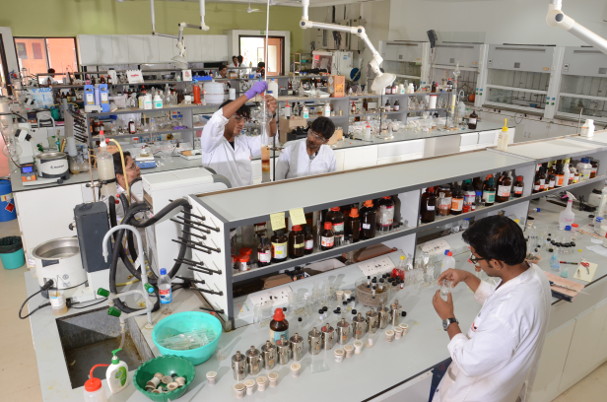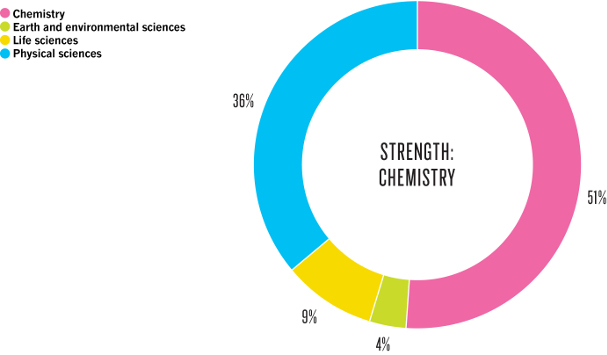
Researchers in a lab at IISER Pune, a research and teaching institute with focus on undergraduate education. Credit: IISER Pune
Indian researchers have so much chemistry
22 July 2016

IISER Pune
Researchers in a lab at IISER Pune, a research and teaching institute with focus on undergraduate education.
A significant rise in chemistry research makes India a Nature Index 2016 Rising Star.
India’s science community has long had a passion for chemistry and the love shows no signs of abating. Between 2012 and 2015, the country’s contribution to publications in the field grew by 35%. Chemistry made up more than half of India’s scientific contributions to the index in 2015.
The recent surge in activity can be traced back to changes made in 2008 when a new overarching funding body, the Science and Engineering Research Board (SERB), was established under the auspices of the Department of Science and Technology.
Although total funding for the field has not significantly increased, the advent of SERB has brought much needed coordination and accountability, says leading theoretical chemist, Debashis Mukherjee. Much of the funding is now distributed through a competitive grant system. “The quantum of funding has not increased all that much but it is being spent more meaningfully”, says Mukherjee. This has coincided with a growth in the number of chemists, as well as the increasing contributions in chemistry by scientists from other fields.
Cutting-edge chemistry
India’s chemistry output grew significantly in four years, from WFC 350.39 in 2012 to WFC 472.48 in 2015, and was the main contributor to its 2015 WFC. Last year, researchers had 576 chemistry papers included in the index.

By Annabel McGilvray
